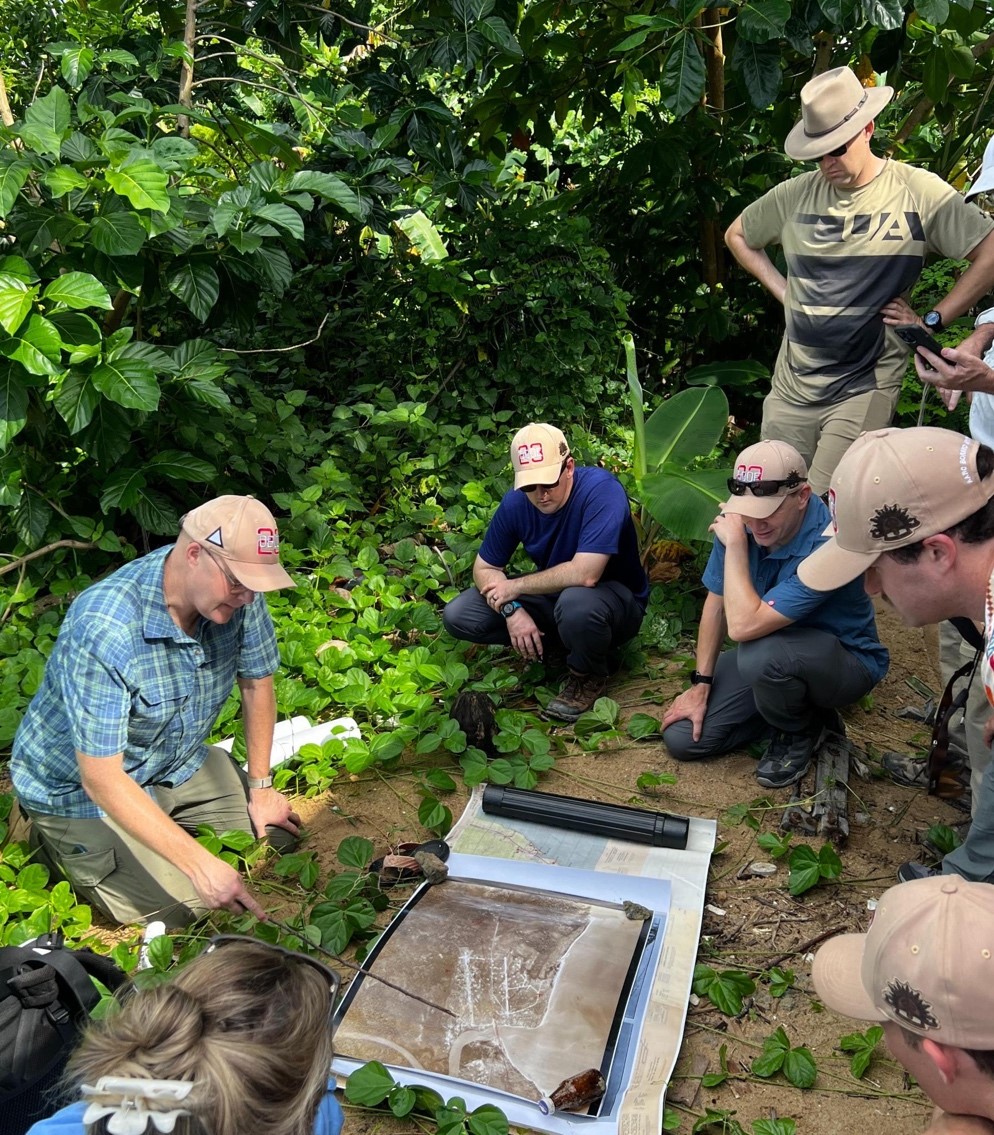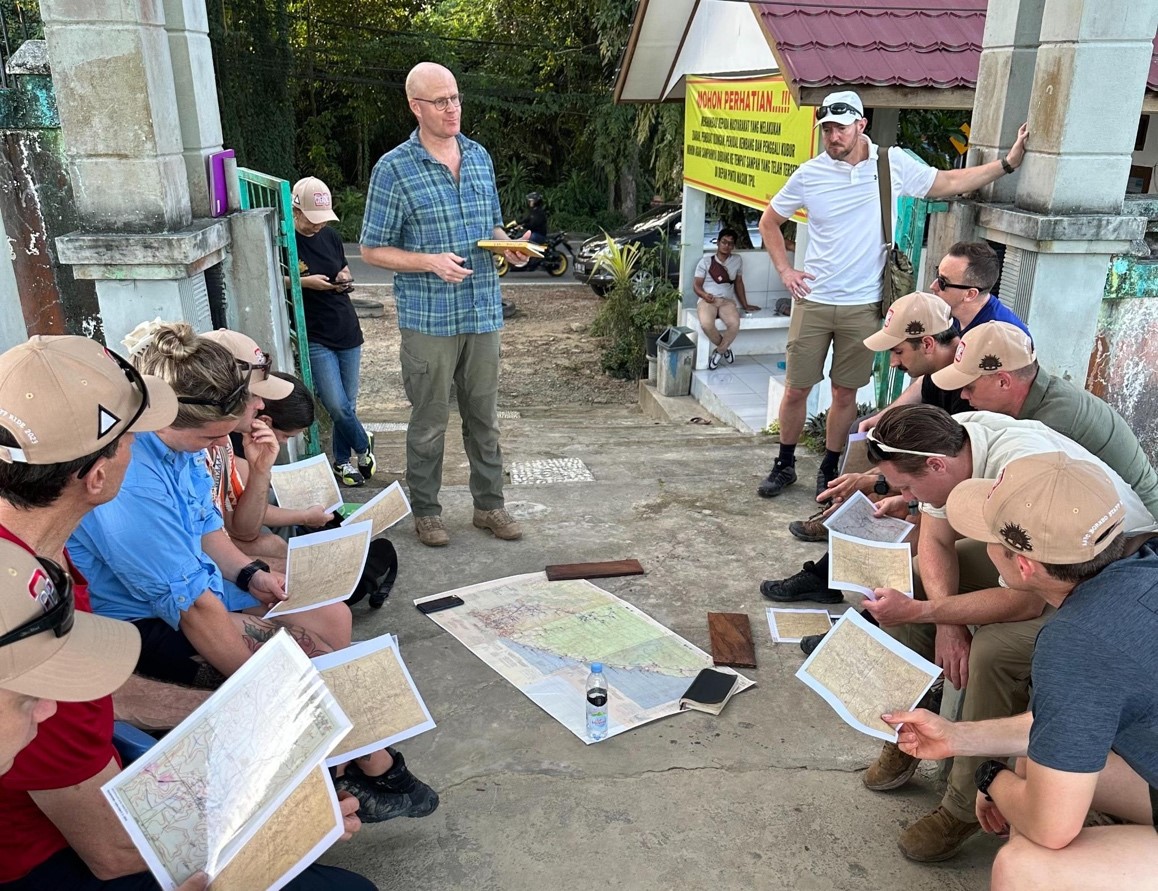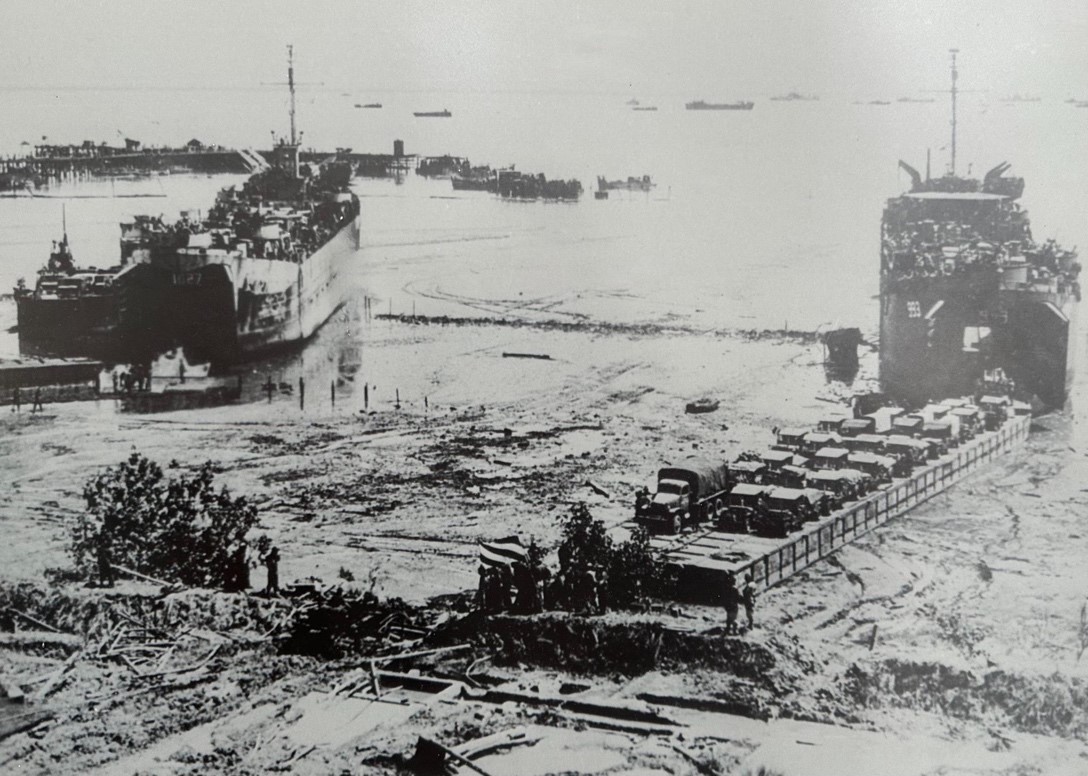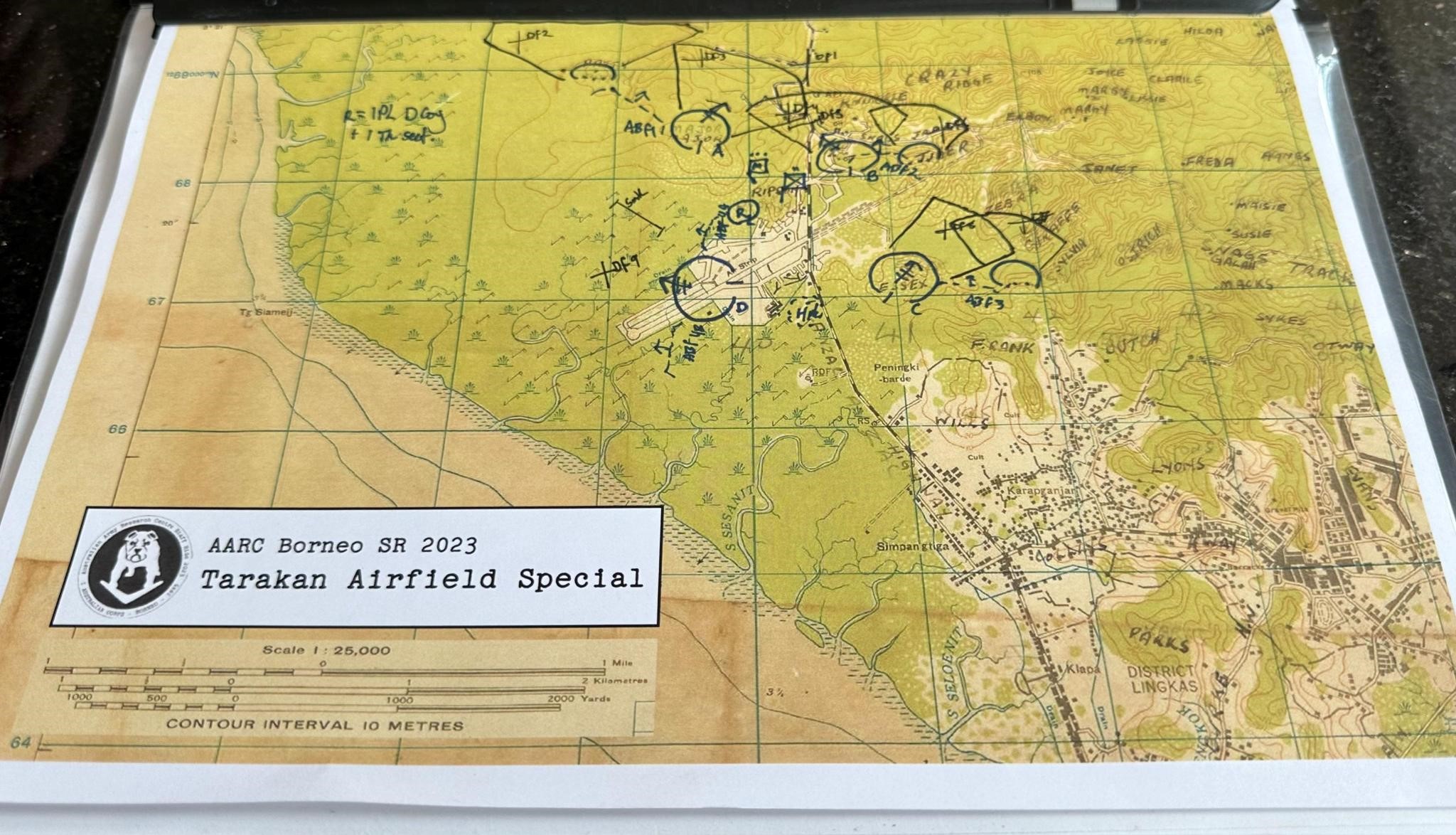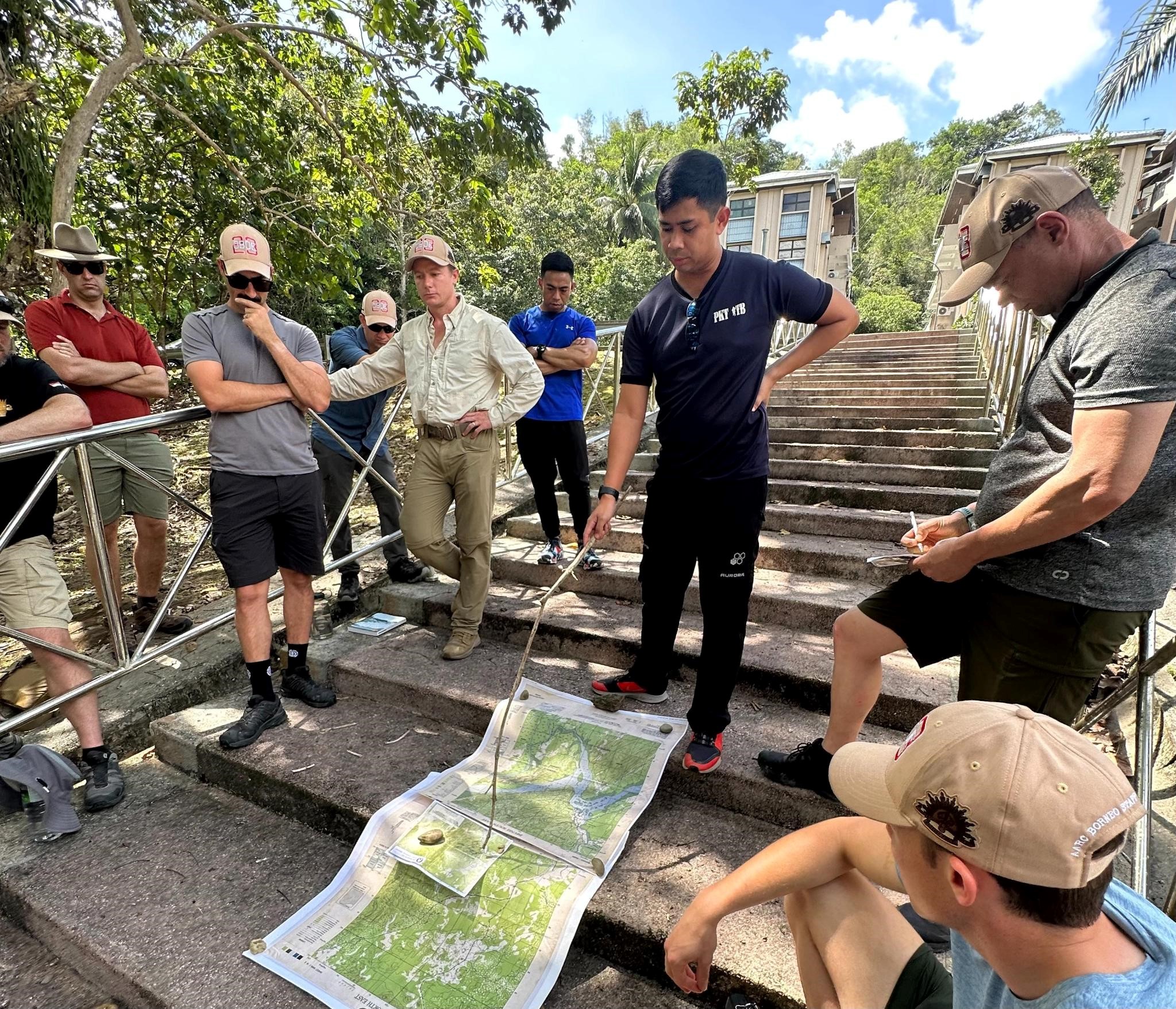The Oboe landings – well planned, resourced and executed –
were, and are, rightly considered the acme of amphibious operations.
Dayton McCarthy
Introduction to The Oboe Landings 1945
Australian Army History Unit, Campaign Series 32
“G’Day Sir, I’m looking for your support to attend a staff ride.” These were my hopeful words to my boss shortly after learning of an opportunity to travel to Borneo to study a series of 1945 amphibious operations. A staff ride wasn’t something I had previously heard of, and I was wondering if my boss would have either. Luckily, he saw the value in releasing me! I had been asked to participate due to my Indonesian language skills - which I am always keen to practice - but the activity proved immensely valuable in so many more ways.
The aim of a staff ride is the deep study of a battle or campaign. Supported by extensive reading, these activities enable an examination of the actual ground where the fighting occurred in order to gain insights that can be directly applied to contemporary warfighting. The conduct of the Army Staff Ride Program is the responsibility of the Australian Army Research Centre as a part of its support of the enhancement of the professionalism, leadership and ethical awareness of Army’s soldiers and officers.
The three amphibious operations - Oboe 1 (Tarakan), Oboe 2 (Balikpapan) and Oboe 6 (Brunei Bay and Labuan) - were conducted by the 7th and 9th Australian Infantry Divisions in the closing stages of the Second World War. They were supported by the US Army Corps of Engineers and powerful Allied and Australian naval and air forces operating from various locations that span present-day Indonesia, Malaysia and the Philippines.
The staff ride concentration and briefing phase commenced in Jakarta with 11 captains and majors, an OIC, a Chief Instructor and a historian. The latter role was filled by Associate Professor Garth Pratten - also a captain in the Army Reserve. A key aspect of initial and ongoing discussions was the broader geo-political circumstances that found Australian troops committed to Borneo.
The first battlefields visited were at Balikpapan, an oil and coal-rich hub in the Indonesian province of East Kalimantan. This is where, on 1 July 1945, the 7th Australian Division assaulted this waterfront town – directly into the centre of the Japanese defence. Our activities here set the pattern for the staff ride. On commencing our consideration of a historic engagement, the Chief Instructor would outline the situation with a description of troop strengths and dispositions, combined arms support availability, and other factors that affected the battle at the time. Participants were asked to describe their orders and scheme of manoeuvre as though they were in command of the attacking force.
Following the presentation of courses of action and battle plans, Associate Professor Pratten would lay out copies of original maps from unit war diaries and describe what actually occurred. This approach allowed comparisons and discussion on how a contemporary commander might approach the situation. Variations on this theme occurred throughout the conduct of the staff ride. This approach saw all participants highly engaged, often resulting in deep conversations regarding wartime commanders' decisions and leadership styles.
At Tarakan, the 26th Brigade (of the 9th Division) quickly secured an airfield to support subsequent Oboe landings but then saw the most brutal fighting of the campaign to clear the overlooking hills. Trekking along steep mountain tracks covered in the jungle gives a tremendous appreciation of just how little can be seen through dense foliage when trying to plan tactical actions and move equipment.
What became more evident for me as the staff ride progressed was the immense professional benefit I gained from the other participants. The opportunity to discuss historic and contemporary military topics, share cultural aspects, walk the ground and reflect on what had occurred in various locations with a diverse group of mid-level officers was a rare and valuable experience.
Each participant was required to present a 10-15-minute verbal brief to the group with topics allocated based on the officer’s corps speciality, dealing with thematic aspects of the operations and their broader historical context. A discussion of current Australian Army single service and joint tactics, techniques, and procedures usually followed. The battlefield setting for these briefs only added to their value and the ability of other participants to benefit from what was being presented. For example, discussing the intricacies of a beach landing and assault whilst overlooking the actual beach was invaluable.
Brunei and Labuan – our final destinations - were the sites of the amphibious assaults undertaken by the remaining brigades of the 9th Australian Division. After the landings, Australian forces moved inland by using the rivers. The staff ride visited the town of Beaufort, where an entire Brigade attacked, resulting in heavy fighting. Here, Private Leslie Starcevich of the 2/43rd Infantry Battalion earned the VC while fighting to relieve a surrounded company on a jungle-clad hillside.
For many of the group, it was their first visit to the oil-rich, devout Muslim kingdom of Brunei. We were fortunate indeed to be invited to the residence of the Australian Government Head of Mission, Mr Luke Arnold, for a meal. The Australian Defence Adviser to Brunei also arranged for officers of the Royal Bruneian Armed Forces (RBAF) to join the staff ride for two half days of activities, which proved to be excellent engagement opportunities.
On our final afternoon, in a seminar setting, our group reflected on the many lessons learned during the activity – an incredibly useful way to finish up. The discussion highlighted and confirmed that various difficulties faced by Australian forces in 1945 remain issues today.
As the staff ride neared its conclusion, the group participants contrasted the cultural and socio-economic aspects of the three countries we had visited. What struck me most was a comment made by one of its more senior members that went something like – “this trip has been the best and most rewarding activity of my career to date.” I believe that comment summed up the experience for most of us and highlighted the value of the activity on so many levels. If offered, I highly recommend this unique form of professional military education to any officer or NCO.


